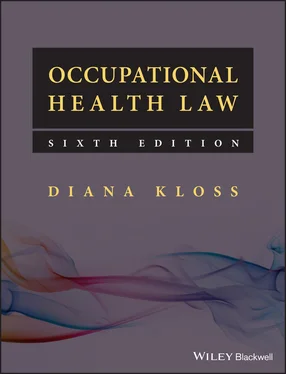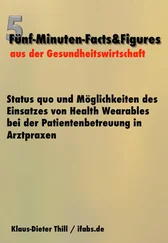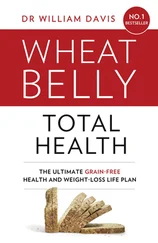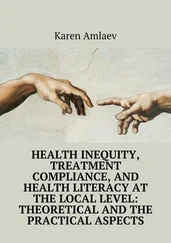Hepatitis C is a notifiable disease, and falls within the Industrial Injuries Disablement Benefit Scheme.
Asymptomatic infection with HIV counts as a disability under the Equality Act from seroconversion, but this does not apply to hepatitis.
Clearance of infected HCWs to perform EPPs
For many years infection with HIV was a complete bar to working in any specialty that involved EPPs. However, the absence of evidence of transmission from HCW to patient in the UK, using data from patient notification exercises (PNEs) over 20 years during which over 10,000 patients were tested, and the development of effective anti‐retroviral therapy, led to a change of policy in 2014, allowing those HCWs whose condition is well controlled to perform EPPs. They must submit to regular viral load monitoring (every 12 weeks) by a consultant OH physician and consent to their names being registered on the UKAP‐OHR, a central confidential register managed by Public Health England on behalf of Health Protection Scotland, Public Health Wales and the Public Health Agency for Northern Ireland. HIV infected HCWs with a plasma viral load >200 copies/ml should be restricted from performing EPPs or commencing training for careers that rely upon performing EPPs.
HCWs who intend to perform EPPs should be tested for hepatitis B surface antigen first, which indicates current HBV infection. If negative they should be offered vaccination (unless already vaccinated) and have their response checked. If there is evidence that they may have acquired natural immunity, advice should be sought from a virologist or clinical microbiologist as to whether immunisation is necessary. HCWs for whom vaccination is contra‐indicated, who decline vaccination or who are non‐responders to vaccine, should be restricted from performing EPPs unless shown to be non‐infectious. They should be tested annually for surface antigen. HCWs shown to be hepatitis B e antigen positive will not be permitted to perform EPPs or undertake clinical duties in renal units. Treatment is available. An HB e antigen positive HCW who has been successfully treated and whose e antigen negative status is sustained 12 months after cessation of therapy, may be allowed to resume EPPs. Infected HCWs undergoing treatment must be regularly monitored. If they fail to attend for testing, or refuse to be tested, the occupational physician should warn the employer that they are no longer cleared to perform EPPs, until it has been established that the HCW has an up‐to‐date viral load which does not exceed the cut‐off of less than 200. In 2019 it was decided to include HCWs being monitored for HBV infection on the confidential register already set up for HIV positive HCWs.
HCWs infected with hepatitis C who are RNA positive should be restricted from performing EPPs or commencing training for careers that rely upon performing EPPs, unless they have responded successfully to treatment. If they have been treated with antiviral therapy and have remained HCV RNA negative for at least six calendar months after cessation of treatment, they can return to performing EPPs, but should be checked again six calendar months later.
Apart from these restrictions there is no bar to a HCW infected with a blood‐borne virus being employed in the care of patients which does not involve EPPs, but they should remain under regular medical and OH supervision in accordance with good practice.
Confidentiality concerning the infected health care worker
There is a general duty to preserve the confidentiality of medical information and records ( Chapter 3). OH records are kept separately from other hospital records and are not accessible to managers without the consent of the worker, other than in the public interest where patients or others may be at risk. Disclosure of the fact that a particular individual is not cleared to perform EPPs is sensitive because it clearly implies that they are infected with a blood‐borne virus. For that reason such information should be confined to OH and to managers and others who need to know of the person’s EPP status. If a patient notification exercise is undertaken, care must be taken to limit the disclosure of the identity of the infected HCW to as few people as possible. In H (a health care worker) v . Associated Newspapers (2002) a HCW performing EPPs was found to be HIV positive and a patient notification exercise was proposed by the health authority. The HCW obtained a court order against a newspaper that his identity, his specialty and the identity of the health authority should not be published, but he was ordered to disclose to the health authority the records of his private, as well as his NHS, patients.
Patient notification exercises
These may be advised where it is discovered that a HCW has been performing EPPs, either not being aware of a BBV infection which has subsequently been diagnosed, or deliberately concealing it. Patients who have been put at risk are entitled to be made aware of this and to be offered a test in order to establish their status. A risk assessment is needed to establish, if possible, the likely period when the HCW was infectious. The full employment history of the HCW during that period must be compiled. Also, it will be important to establish the nature and history of the HCW’s clinical practice. Research may be needed into whether it is likely that the infected HCW was the source of iatrogenic transmission to a patient. The patient identification process will require the assistance of the medical records officer to identify patients treated by the HCW. It is recommended that in the first instance patients who have undergone relevant EPPs by a HIV infected HCW during the previous 10 years be identified. For PNEs involving HCV or HBV infected HCWs there is no specified time limit. Other factors which may be relevant are whether there is evidence of the HCW’s poor clinical practice or a physical or mental impairment which might have affected their standard of practice. UKAP can provide expert advice on the need to undertake a PNE but the responsibility lies with the local public health team. As these exercises are complicated and expensive to undertake, and cause damaging publicity and distress to patients, the decision is a difficult one to make. In practice, where there is no evidence of transmission of the virus to a patient, the decision whether to commission a PNE depends on an assessment of the degree of risk posed by the particular HCW in the particular circumstances.
2.12 Professional indemnity
Those who work for others rather than themselves often assume that any legal liability falls on the employer alone. This is definitely not the law. The primary liability for negligence lies with the person who commits the negligent act. Sometimes there is no alternative defendant. An independent consultant is the only possible defendant if he makes a careless mistake. If he is in partnership, his partners are also liable. Where the health professional is an employee, the employer is vicariously liable: they are both responsible. If the employer is in financial difficulty and uninsured, or claims a contribution or indemnity from the employee, or where the claimant out of revenge chooses to pursue the employee instead of or as well as the employer, damages and costs may threaten. The OH professional may be involved in a HSWA prosecution in which he may need legal advice and representation (it is not possible to insure against a criminal fine). For these reasons, every professional should be covered by professional liability insurance, despite the lack of a legal obligation to insure, and the guidance of the regulators is that they have an ethical duty to do so. In the past, nursing staff commonly insured through membership of the Royal College of Nursing (RCN) or a trade union. After the RCN in 2014 withdrew cover for its members who are directly employed and therefore included in their employer’s insurance, nurses were advised to check whether they were protected through an employer’s insurance or whether, if they were in the position of an independent contractor, they needed to take out and pay for their own professional liability insurance. Doctors usually obtain professional indemnity through a subscription to the Medical Defence Union or the Medical Protection Society. The latter are not, strictly speaking, insurance companies, because they have a discretion whether to indemnify ( Medical Defence Union v. Department of Trade (1979)). In 2019 a Clinical Negligence Scheme for General Practice was introduced in England and Wales providing indemnity for all staff working in NHS General Practice. The Faculty of Occupational Medicine advises that in his own interest and that of his patients, the doctor should obtain adequate insurance or professional indemnity cover for any part of his practice not covered by an employer’s indemnity scheme.
Читать дальше












